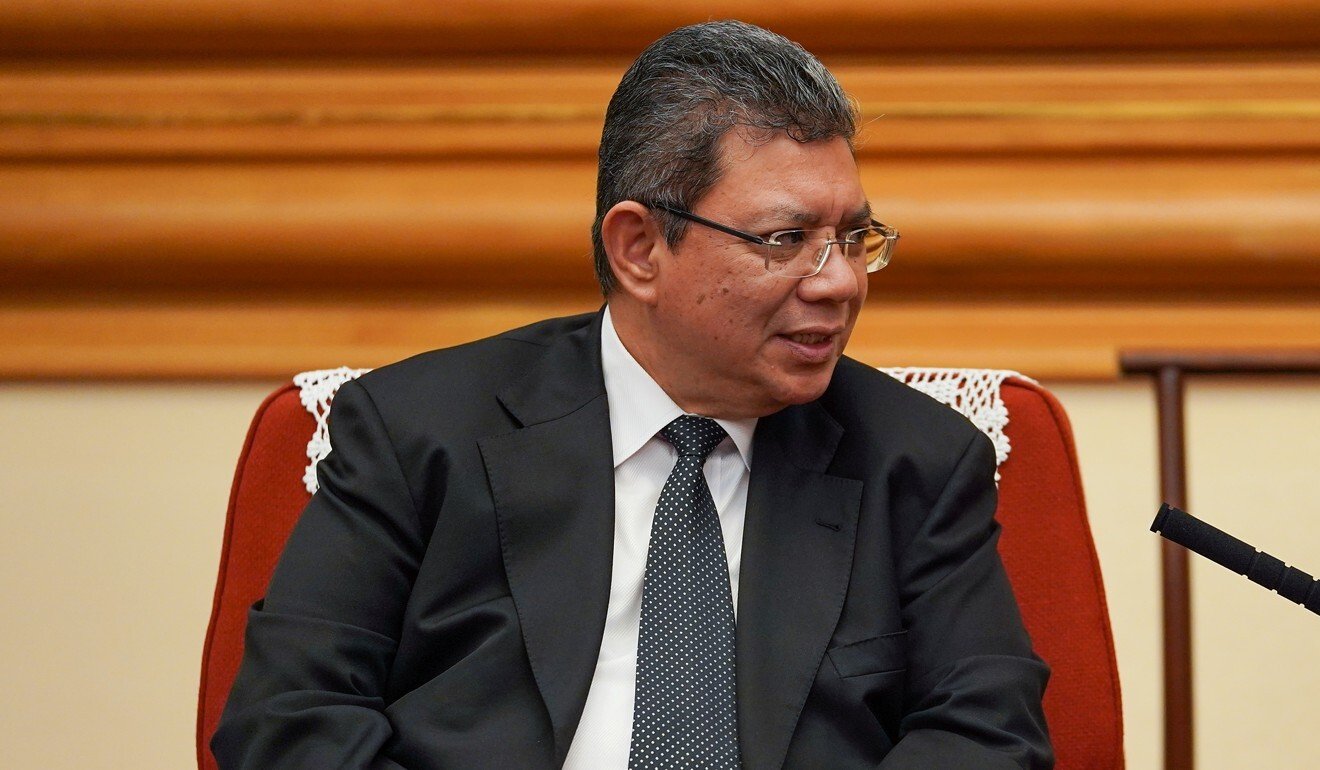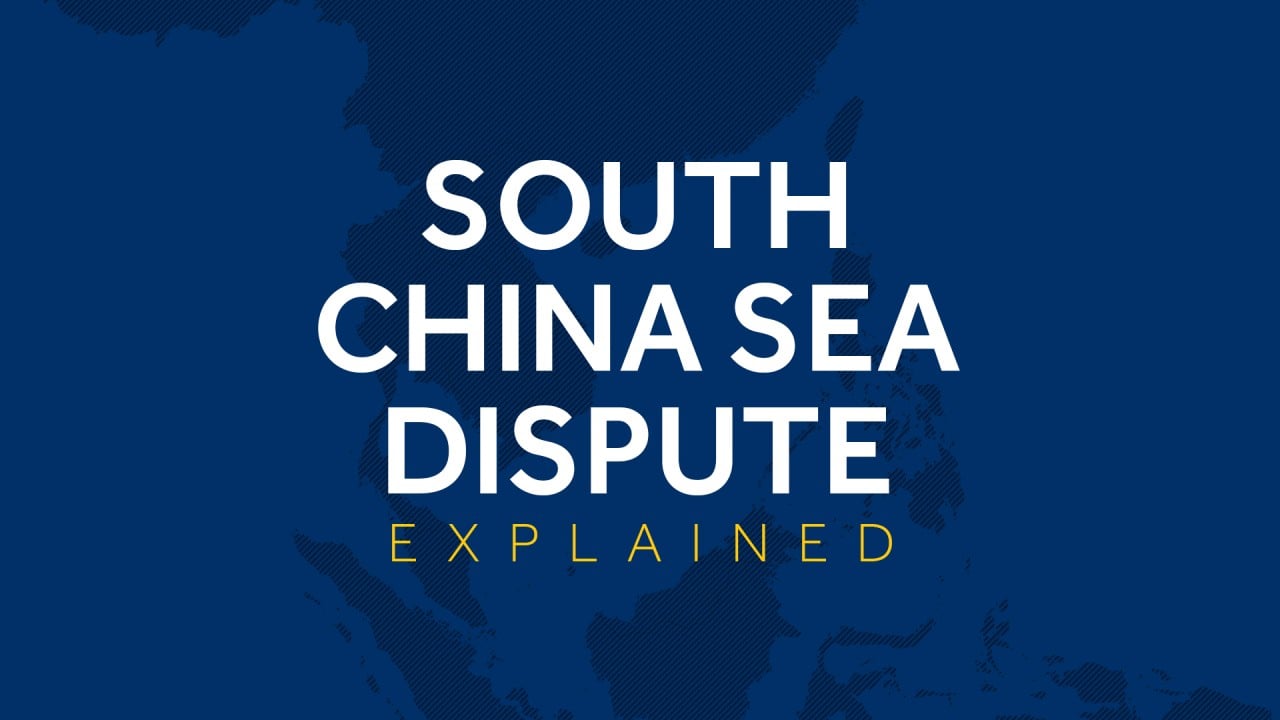
Malaysia expects more Chinese boats in South China Sea as Petronas drills for oil
- Work on the Kasawari field, which contains an estimated 3 trillion cubic feet of recoverable gas resources, has attracted Chinese vessels to Malaysian waters
- The increased incursions in the South China Sea have led Malaysia to describe its otherwise productive ties with Beijing as ‘difficult to quantify’
Petronas is developing the Kasawari gas field in Malaysia’s EEZ, which is situated some 200 kilometres (124 miles) away from the coastal town of Bintulu in Sarawak.
The project has attracted Chinese coastguard boats off the coast of Sabah and Sarawak, particularly at the South Luconia shoals, Saifuddin told a webinar in Jakarta organised by the Foreign Policy Community of Indonesia.
“I think for as long as Petronas is working on Kasawari, we can expect China to be visiting that area perhaps more often,” he said.
“We have always protested. I have lost count of the number of protest notes we have sent to China. We will be steadfast and continue to respond diplomatically to them.”
Discovered in November 2011, the Kasawari field contains an estimated 3 trillion cubic feet (tcf) of recoverable gas resources. It is being developed by Petronas Carigali, a wholly-owned subsidiary of Petronas.
The field, expected to come on-stream in 2023, is expected to produce up to 900 million cubic feet of gas (mcf) a day.
Petronas CEO Tengku Muhammad Taufik Tengku Aziz said in a Reuters interview earlier this month that the Kasawari project would ensure Petronas remains one of the world’s top five exporters of liquefied natural gas.

On Wednesday, Saifuddin said he had told Petronas’ CEO the company had every right to continue drilling as the Kasawari project was “within our waters and we are a sovereign country”.
China’s envoy in Kuala Lumpur has been summoned twice this year by the Malaysian government to protest Beijing’s activities in the South China Sea.
In June, it summoned ambassador Ouyang Yujing after 16 Chinese military transport jets flew close to Malaysia’s air space without prior notification, a move that triggered Kuala Lumpur to scramble its own fighter aircraft.
On October 4, Ouyang was again summoned by Malaysia’s foreign ministry over the presence and activities of Chinese vessels, including a survey vessel, in Malaysia’s exclusive economic zone off the coasts of Sabah and Sarawak.

03:23
The South China Sea dispute explained
Malaysia claims waters in the disputed South China Sea that extend 200 nautical miles from its coast. This includes an extended continental shelf claim it jointly submitted with Vietnam in 2009.
Malaysia also lays claim to 12 islands in the Spratlys archipelago, and occupies five.
China rejects these assertions and instead lays claim to more than 85 per cent of the resource-rich waters under a so-called nine-dash line boundary, citing historic rights over the area.
Collin Koh, a research fellow at Singapore’s S. Rajaratnam School of International Studies, said China had been keeping a close eye on the Kasawari project from the start, based on his knowledge.
“In recent years, through backchannels, the Chinese have been trying to tell the Malaysians to desist from the South China Sea energy work,” Koh said.
“But it is apparent that Kuala Lumpur has refused to budge. Beijing may have assumed that following the West Capella incident early last year, the Malaysian government would be more circumscribed in proceeding with such activities,” Koh said.
In April and May last year, the West Capella oil exploration vessel contracted by Petronas was embroiled in a stand-off with Chinese coastguard vessels, an episode that briefly attracted the attention of other players, with the US and Australia holding military exercises in the area as a show of force towards China.
Since Malaysia has persisted on pursuing its legitimate EEZ rights, and in view of possible external interference as in the West Capella stand-off, China is also likely to ramp up its surveillance on the Kasawari project, Koh said.
Koh described China’s intrusion into Malaysia’s waters as “gunboat diplomacy” aimed at signalling Beijing’s displeasure and exerting sufficient pressure on the Malaysian authorities and/or Petronas to call off the project.
Typically, energy corporations are for-profit and uninterested in geopolitics. “However, they’ll expect the basic modicum of security that can be accorded to their activities by the concerned coastal states,” Koh said.
While Petronas was not likely to face harm as long as the Chinese coastguard and naval vessels maintained a safe distance, escalating geopolitical tensions could “potentially pose safety concerns to the energy company”, he said.
“But unlike the major Western energy majors such as Shell and ExxonMobil for example, Petronas is state-owned and would logically also enjoy the backing of the Malaysian government,” Koh said.
“Furthermore, the drilling takes place in Malaysian waters, in which there’s at least a standing government presence in the form of Royal Malaysian Navy and Malaysian Maritime Enforcement Agency (MMEA) assets in the vicinity,” he said. “So I won’t envisage Petronas having to overreact in any case.”
Koh said the Malaysian foreign minister’s comments on Wednesday was a more “explicit expression” of the Malaysian government’s bid to exercise its legitimate EEZ rights over offshore energy resources.
While Kuala Lumpur has sought to maintain a “broad picture” policy approach on Beijing and prevent the South China Sea issue from affecting an otherwise productive bilateral relationship, Malaysia has in recent years put up a stand with its maritime forces, notwithstanding extant capacity limitations faced by the Royal Malaysian Navy and MMEA.
“But the current Covid-19 situation would add a further complication, in that to spur post-pandemic long-term economic recovery and growth, China remains an indispensable partner when it comes to export market access and investments,” Koh said.
China is Malaysia’s top investor since 2016, with investments amounting to US$4.41 billion in 2020.
China is also Malaysia’s largest trading partner since 2009, accounting for 18.6 per cent of total trade last year.
“This only would impress upon the need to handle this relationship with velvet gloves so as not to ‘rock the boat’ unnecessarily, yet Kuala Lumpur still has to balance this imperative – which is economics, mainly – with the prevailing need to assert Malaysia’s sovereignty and rights,” Koh said.


